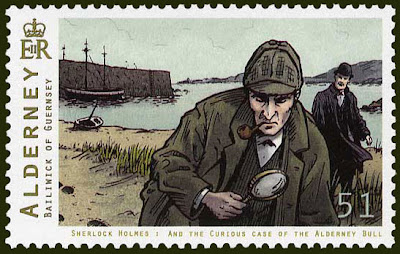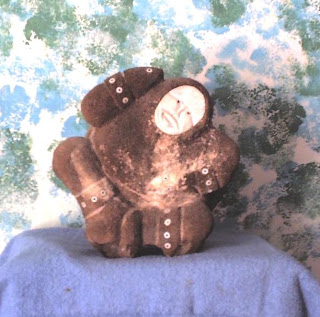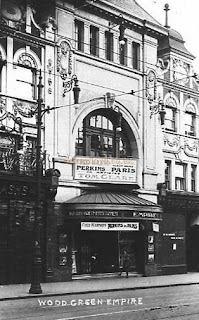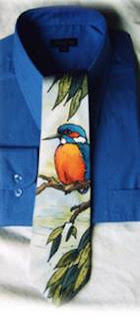What is a chip basket? Is there life after hedge-veg? And who would christen a tomato?
The Guernsey Press, the leading newspaper of the second largest of the British Channel Islands set us a challenge the likes of which we’d never seen before: to reunite the island with an emblem of its past.
"It’s…well, it’s a basket,” I said to Chris, matter-of-fact-ly.
“A basket?” he sounded disappointed.
“Ah but the trick is, it’s not really a basket, it’s a more of a box…” I tossed him this to ramp up the excitement.
“And how is this box symbolic?”
“Well, let me tell you a little story.”
“Can it wait, John I’m…” said Chris, who secretly loves my stories.
“No.”
Tom grew up in Guernsey. On 11th June 1955, with the sun ripening his skin for the last time, Tom was placed below-deck on a ferry to England. At Southampton, he would board a private train to an
undisclosed location and from there it was anyone’s guess – a salad, a sandwich, maybe even a tapenade. Tom was a tomato, and he was not alone. That very same week,
793,966 baskets of Guernsey Toms made the channel crossing. At full-tilt in the 1960s, the island only 25 miles square was
7% under glass; 2500 growers were firing out tomatoes at a rate of
9 million baskets per year, each one hand-picked, cleaned and inevitably christened Tom.
 |
| Guernsey Tom, apparently quite a bashful tomato. |
To the islanders, Guernsey Tom, his
baskets, and the prosperity they brought are a reminder of the grit and
determination shown by those of a certain age; of a time when Guernsey (and
Tom) had
suffered a great deal. Each greenhouse full of baskets full of tomatoes could be
thought of as a microcosm for post-war British pluck.
We’d been asked to find one such
symbolic basket. How difficult could that be? Surely it was a simple matter of
knocking on the nearest greenhouse door? Well, sadly no.
 |
Tomato baskets in their thousands, circa 1930. Now vanished.
Picture credit: Blue Diamond Co. |
By the 1970s the tomato basket was
finished, replaced with the bland austerity of the cardboard “
Dutch tray”. The
writing was on the wall for Guernsey Tom too, in blood-red, peppered with
little yellow seeds: “The Dutch are coming”. Tomatoes could now be sourced more
cheaply in Holland. The
soil-steamers, packers, box-makers, train
drivers, and tomato growers all shut-up shop. Guernsey Tom was relegated to
hedge-veg.
 |
Hedge-veg. "...and no stealing."
Picture credit: visitguernsey.com |
This was a singularly
strange mystery for the Thing Detectives – millions of baskets documented,
but we couldn’t find a single one. Where was Guernsey Tom? We found a clue in
the original email from The Press.
“Latterly, these baskets were used to serve tea in, in
cafes such as the one at Grand Roque”
 |
Holmes and Watson, on the neighbouring island of Alderney
whilst we were hunting for Guernsey Tom.
Picture credit: Guernsey Post |
We had out first clue, unfortunately the café in question has long since closed. Instead we contacted
The Guernsey Folk Museum (logical);
the Guernsey Dairy (not so logical); and several social historians, including the prolific
Peter Brehaut. Yet the basket remained out of our reach.
Then we had an idea: to get the word out to as many islanders as possible. Using the Guernsey Press would surely be cheating, a leafleting campaign time-consuming, and sky-writing slightly heavy handed. Instead we used a bit of lateral thinking - where, during the post-war years, would Guerns congregate, gossip, exchange tomato-growing tips?
"Good morning,” I said, hoping I
was speaking to the lady from the Vale Parish Church, “I’ve heard that
you might have a tomato basket?”
“Ooh yes, but we've always called them ‘chips’,
dear.”
“May I ask if you still use your
chip?
"Ooh yes, but not for Toms. Been
a while since I used it for Toms. I use it for potatoes. But you’re welcome to
it.”
 |
A Guernsey tomato chip (-board basket)
Picture credit: BBC |
"That’s very kind of you, don’t
you need it?”
"It’s lived a life with me,
dear. Probably best to pass it on, ey?”
JA.
As you can probably tell, I'm quite fond of the island. Why not
visit Guernsey yourself? (described wonderfully as "
piece of British territory with a French zest"). Have you considered growing a Guernsey
hierloom tomato? Many thanks to
The Guernsey Press and Shaun Shackleton for their kind article about The Thing Detectives.
If you have a case for
The Thing Detectives, please get in
touch through the
usual channels.








_cover.jpg)














